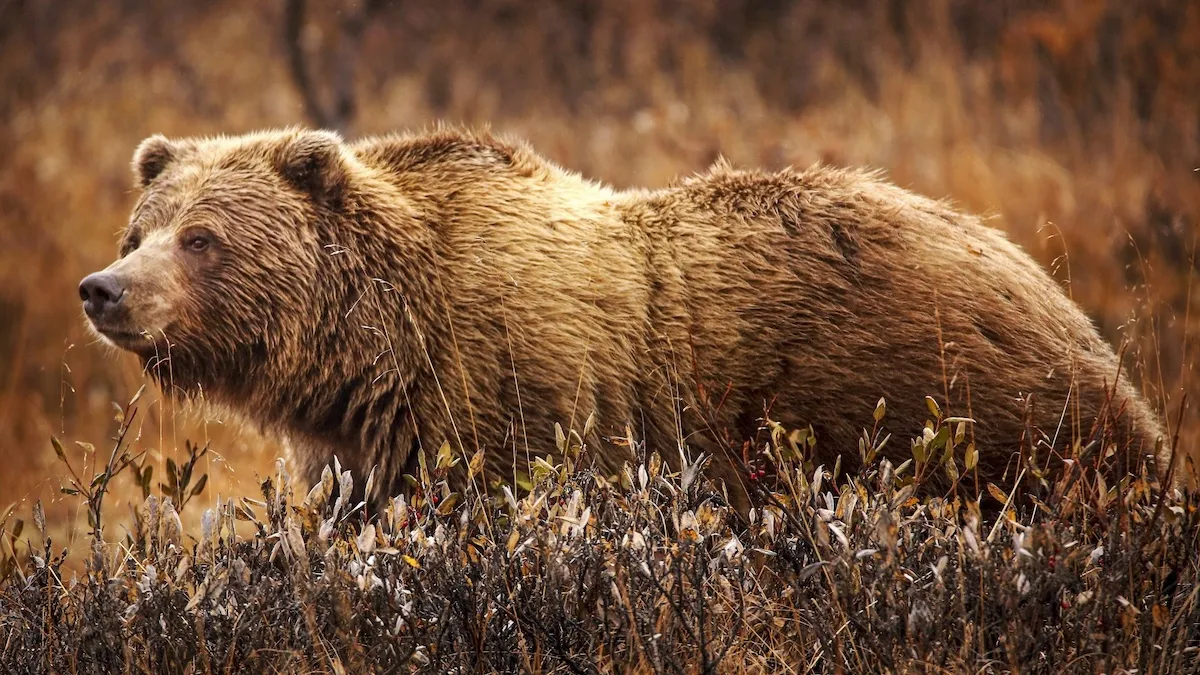Alberta has launched a grizzly bear hunt, the province said in a news release.
But don’t worry, the same government also said in the same news release, “this is not a bear hunt.”
It’s “a measure to ensure the safety of humans and livestock.”
Well, as I’ve been saying for years, I’ve never raised cattle, but I was the agriculture reporter for The Calgary Herald long enough to recognize the smell of BS when I catch a whiff on the wind.
Now, you may have thought that grizzly bears were endangered – although, technically, I guess, we have to say that they’re merely “threatened” (Alberta) or “a species of special concern” (Ottawa). There are thought to be about 1,000 of the majestic but scary creatures left in the province – Alberta boosts that number by about 100 in its release. Roughly 180 of them are safely inside Alberta’s federally run national parks. (Cue the Sovereignty Act!)
Last month, Alberta’s United Conservative Party (UCP) used a ministerial order to very quietly change the regulations to the Wildlife Act to permit “problem bears” to be hunted once again, something that hasn’t been allowed in this province for 20 years. All that is required now is there be “an area of concern.”
Now, according to the government’s news release, “to protect Alberta families and communities, visitors, and agricultural producers, Alberta’s government is taking action on problem grizzlies responsible for the increasing number of negative interactions.”
While there in fact remain very few negative interactions, what form do you think that action is going to take?
According to the presser: “Alberta’s government is creating a new network of wildlife management responders to help stop dangerous and deadly grizzly bear attacks on people and livestock. When a problem animal like a grizzly or elk is identified, members of the approved network will help provide rapid conflict response times across all regions of Alberta. This response could include tracking and euthanizing a problem animal, while still following all rules and regulations already in place.” (As you can see from this, elk are also in the crosshairs.)
When dealing Orwellian statements by the United Conservative Party government, in which obvious truths and their opposite are often reversed, a short glossary may be helpful:
- Negative interactions: Bears being bears
- Wildlife management responders: Hunters
- Members of the approved network: Hunters known and liked by the UCP
- Rapid conflict response: Hunters with 4X4s
- Tracking: Hunting
- Euthanizing: Shooting to death
- All rules and regulations: “Red tape,” soon to be removed by the minister of red tape reduction
“We are taking a proactive approach to help Albertans co-exist with wildlife through our new wildlife management program,” said Forestry and Parks Minister Todd Loewen, a part owner of a hunting guide outfitting company. “These changes demonstrate our commitment to ensuring Albertans can safely work and recreate throughout the province.”
“Losses suffered due to predation can be a significant blow to ranchers and farmers,” said Agriculture Minister RJ Sigurdson in his canned quote, coming a bit closer to what this is actually about. “This new program will reduce the number of losses, protect farms, and help producers avoid conflicts with wildlife.”
Environmentalists, naturalists, and conservationists were appalled at what sure sounds like an effort to dress up trophy hunting for friends of the government as a public service.
“If a bear threatens human safety, appropriate actions must be taken by professionals, not trophy hunters,’ the Alberta Wilderness Association said in a news release. “Although there are cases where bears may have to be euthanized, this should be a last resort that is only used when a bear poses an imminent safety risk.”
“Hunting is not an acceptable management approach for a threatened species,” said Devon Earl, a conservation specialist with the association.
“This seems like a short-sighted decision intended to appease Minister Loewen’s ties to the Guide-Outfitting and Trophy Hunting industries and lacks any public integrity,” said John Marriott, wildlife photographer and co-founder of the Exposed Wildlife Conservancy, in the same statement. “Why wasn’t the public consulted on this? Why weren’t grizzly bear researchers involved in this decision?” (One reason may be that the province’s only specialist in human wildlife conflicts retired in 2022 and hasn’t been replaced.)
“The science on grizzly bears very clearly does not show a beneficial link between hunting and conflict resolution,” Marriott said. He added, probably answering his own question: “So why are we risking grizzly bear recovery for a few hunters to have trophy rugs on their walls?”
“Killing grizzly bears does not reduce human-bear conflict,” agreed Opposition Environment Critic Sarah Elmeligi, who unlike Loewen is a PhD grizzly bear biologist. “We know from scientific research that the best way to reduce conflict is to work with people to better coexist with grizzly bears.”
In a statement, Dr. Elmeligi accused Loewen of trying to frighten Albertans into believing grizzly bear attacks are common and the only solution is to kill the bears. “This is just outright false,” she stated. “Killing bears doesn’t reduce conflict, it reduces populations.”
“A UCP Minister is choosing to serve himself and his friends rather than Albertans who have spoken in support of grizzly bear recovery time and time again,” the MLA for Banff-Kananaskis said. “This decision by the UCP government is not informed by science or scientific data. … Shooting your way out of wildlife management challenges is archaic and needless.”
The story has now caught the attention of foreign media, with the United Kingdom’s Guardian newspaper taking a break from its post-election coverage to explore the latest UCP depredation from Alberta.



